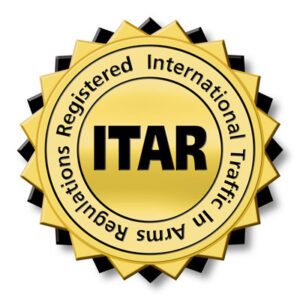By Bruce Leeds, Senior Counsel
July 1st not only marks the mid-point of the year, but is also the effective date of round three of Export Control Reform.
The same process was used with round three as with rounds one and two. Specific categories of the US Munitions List (USML) in the International Traffic in Arms Regulations (ITAR) of the Department of State were revised to more specifically describe the articles controlled. Most parts, components, accessories, and attachments that are still controlled in the affected categories are also described specifically (instead of using “catch-all” language). Articles no longer described in the categories, and their associated technical data, are transferred to the Commerce Control List (CCL) in the Export Administration Regulations of the Department of Commerce. Several new “600 series” provisions in the CCL also go into effect on July 1st for many of the transferred articles. The changes were published as a Final Rule in the Federal Register of Jan. 2nd, 2014, with a 180 day implementation period that ends on July 1st.
The affected USML categories are:
- Cat. IV – Launch Vehicles & Missiles
- Cat. V – Explosives
- Cat. IX – Military Training Equipment
- Cat. X – Personal Protective Equipment
- Cat. XVI – Nuclear Weapons
These categories sound pretty narrow in focus and as a result you may think that you (or your clients) are not affected by the USML changes. However, remember that parts, components, accessories and attachments are most likely to be affected. Perhaps you don’t manufacture or export rockets and guided missiles, but you may deal in parts or subassemblies for rockets and guided missiles. If so, take a close look at the July 1st changes.
The revised USML categories describe in detail what is controlled. Here are a few samples of descriptions in the revised categories:
Cat. IV(4)(c)
“(3) Solid propellant rocket motors, hybrid or gel rocket motors, or liquid propellant rocket engines having a total impulse capacity equal to, or greater than, 8.41 x 105 N·s, but less than 1.1 x 106 N·s (MT)”
Cat. X(a)(2)
“(2) Personal protective clothing, equipment, or face paints specially designed to protect against or reduce detection by radar, IR, or other sensors at wavelengths greater than 900 nanometers”
Not all of the descriptions are quite this technical, but unless you have an engineering or technical background it may be difficult to tell whether an article falls within some of the categories. You may need a good technical resource to assist with product classification. The same goes for the corresponding provisions in the CCL, which can be even more detailed.
The CCL has new “600 series” provisions to capture many of the transferred articles. Examples include:
- 9A604 – Certain rockets, guided missiles, and parts
- 0A604 – Certain chemicals and explosives
- 0A614 – Certain trainers, equipment and parts
- 9A613 – Personal protective equipment
Other existing CCL provisions are expanded to provide for some of the former USML articles.
The transition rules are the same as before. First, using the old USML classifications (“that’s the way we have always done it”) is not acceptable, and license applications submitted under those classifications will be returned without action. If you are not certain whether a product falls on the revised USML, or is transferred to the CCL, request a Commodity Jurisdiction Determination from Department of State.
If an exporter has existing ITAR licenses and agreements for articles transferred to the CCL, they can continue using them for up to two years after the effective date, or until they expire or are used up, whichever happens first. The alternative of course is to obtain licenses from Department of Commerce (or qualify for license exceptions), and terminate the existing ITAR licenses and agreements.
If an exporter has existing ITAR licenses that in part cover transitioned articles and in part non-transitioned articles, they can continue using the licenses until they expire or are used up. The exporter can also obtain licenses from Department of Commerce for the transitioned articles (or qualify them for license exceptions) and use the ITAR licenses only for the articles remaining on the USML.
The exporter will also need to remember that the export procedures and destination control statements are different for CCL articles versus USML articles.
After July 1st only eight of the 21 categories on the USML will be left to revise and transition. Some of these, such as artillery and ammunition, may have minimal changes. The two most significant categories left will be Cat. XI covering electronics, and Cat. XV for satellites. As of this writing there have been no recent Proposed or Final Rules published for these categories. Keep an eye on the Federal Register, but don’t plan on anything final for these categories for a while.
So, do you or your clients deal in export controls? Do you like change? If so, get ready for more fun. If not, find another field of endeavor.



























